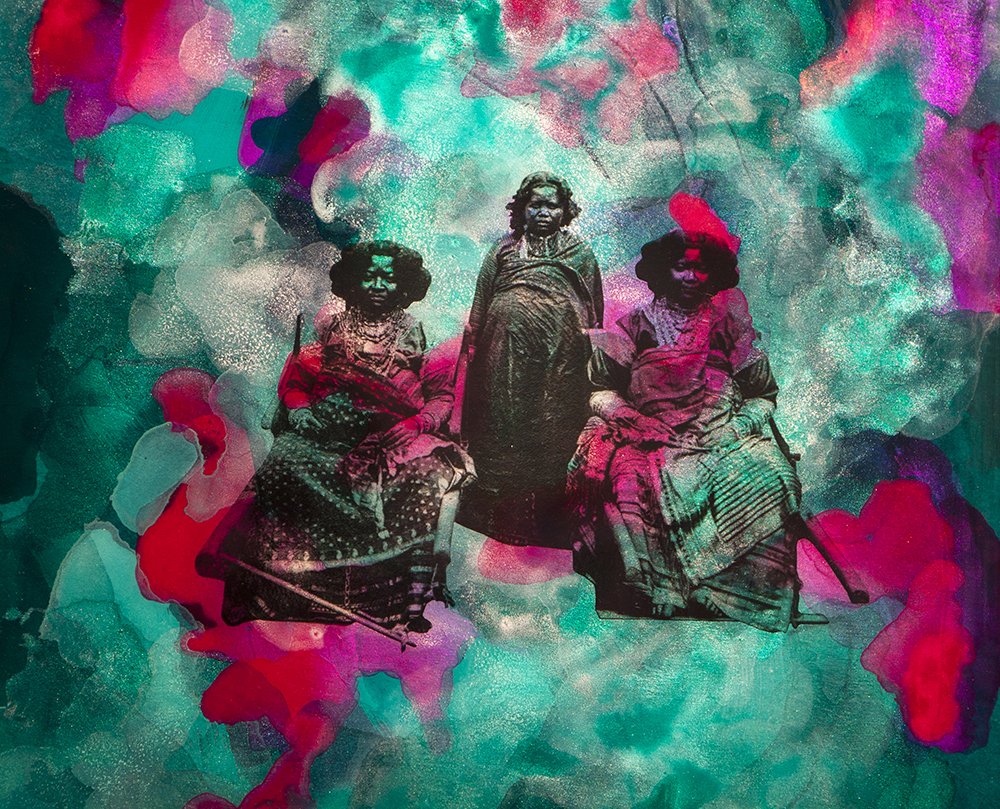From issue: #12 Time
By Shoair Mavlian, Photoworks.
Combining photography, painting, video and installation Shiraz Bayjoo’s work is multi layered, providing the viewer with a window into complex past histories. His research-based practice often evolves from deep investigations into the legaceys of empire and colonialism. Having made context specific works about his native Mauritius, a space of Afro-Asian hybridity, as well as in the UK, the place in which we grew up.
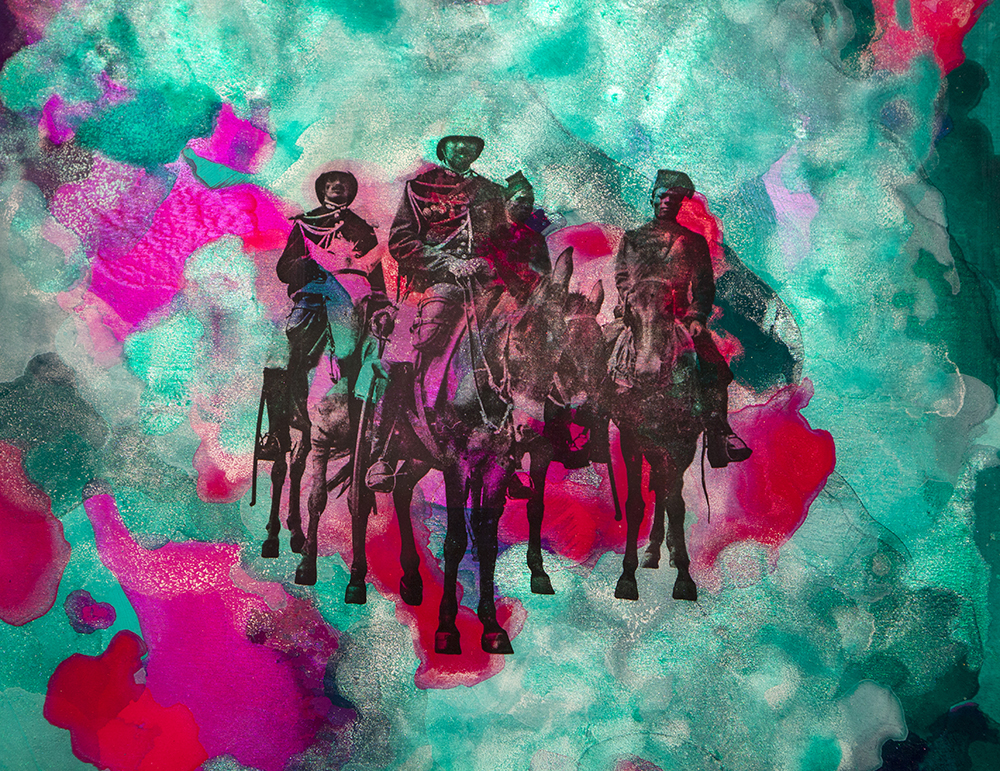
His extensive body of work Searching for Libertalia is centred around the island of Madagascar. Located in the Indian Ocean Madagascar has been inhabited for approximately 2000 years, its recent history layered with piracy, slavery, colonialism, sovereignty and independence.
Using literature as a starting point Bayjoo was first inspired by the book ‘A General History of the Pyrates’ first published in 1724 by Captain Charles Johnson, believed to be a pseudonym, the work is often attributed to Daniel Defoe. Bayjoo uses the fictional story of the utopian settlement of Libertalia in the northeast of Madagascar, as a framework through which to see the landscape and focus his visual research.
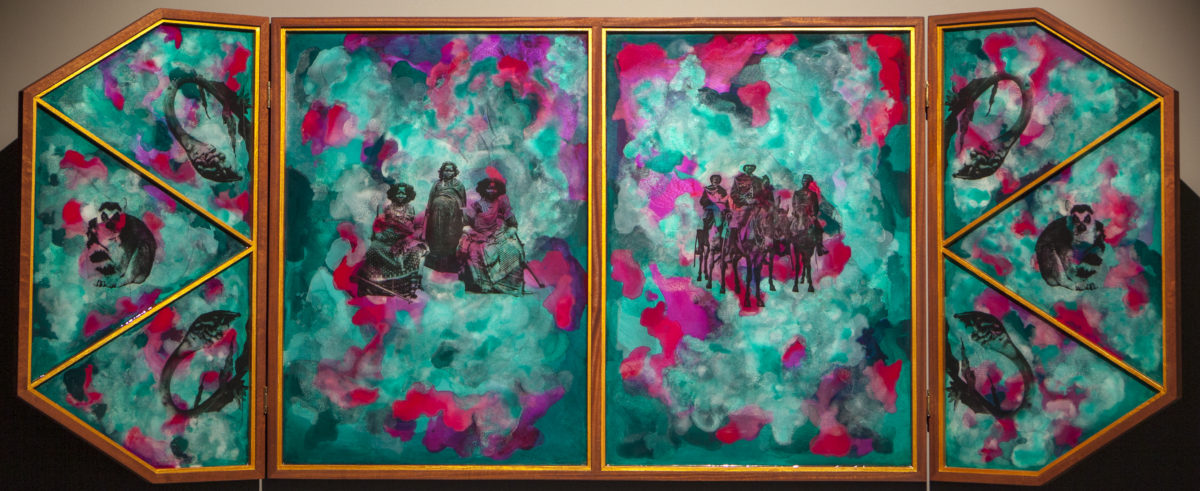
Bayjoo uses archival images sourced from various location including public collection such as the Quai Branly Museum Paris, as well as private collections. These archival images are then re-worked by Bayjoo into brightly coloured painterly objects. Focusing on portraits, these works elevate characters who have been overlooked by mainstream western histories, highlighting their stories and significance. By piecing together multiple historical narratives Bayjoo reveals the often oppressive and violent history which took place in these locations while at the same time highlighting the stories of Madagascan Queens and slaves. There contemporary re-imagining bringing them on equal steed. Subtle nuance is used throughout the work to help solidify the new narratives being told by the artist. For example, women are larger in scale and prominence than their male counterparts, done intentionally in an attempt to readdress the historical bias towards men in the telling of history.
Influenced by the language of religious alter pieces and ornate framing these images become objects, overpainted and encased within wooden frames. Bayjoo also borrows from the language of traditional museum presentations, exhibiting unframed images and object in heavy hard wood vitrines, shielded behind glass. A nod to the way in which objects from ‘exotic’ places such as Madagascar would have been exhibited by the west.
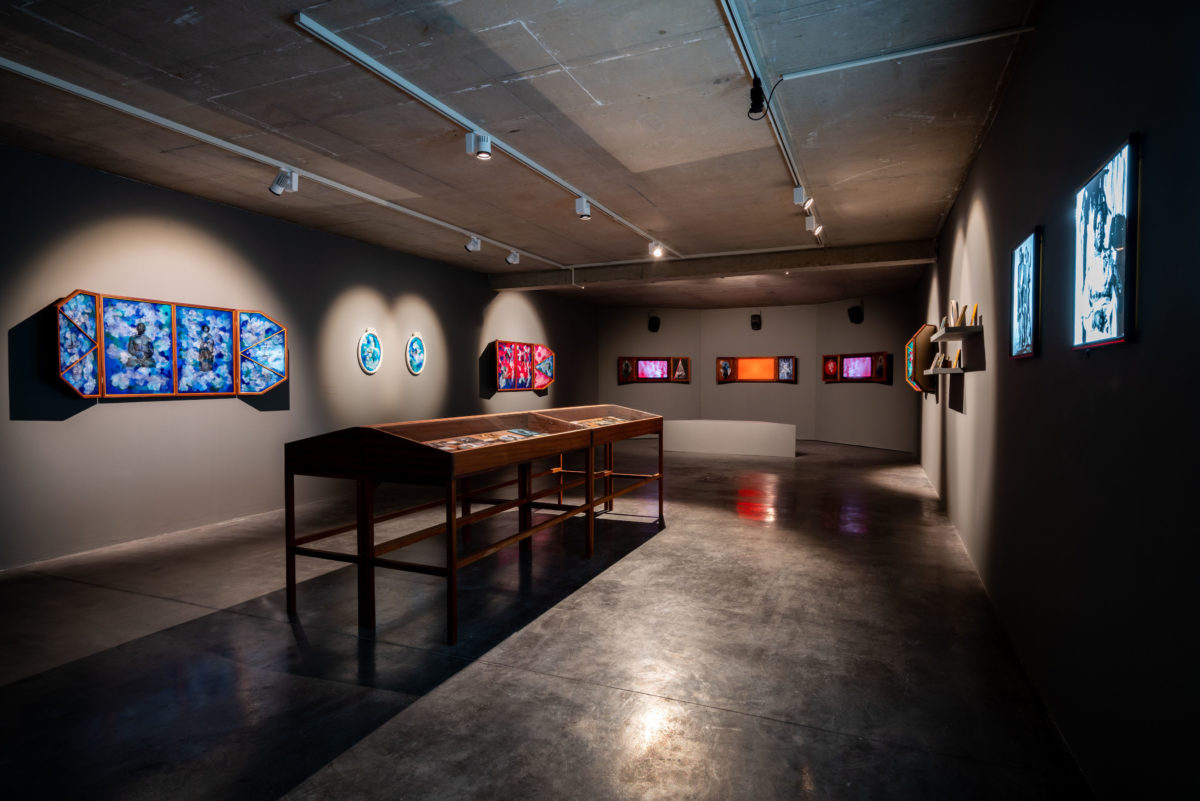
Searching for Libertalia allows us to see through time, revealing different historical moments linking geography, history, cultural and politics. It reminds us that history is simultaneously distant and present. In contested landscapes relics of past traumas exist in plain sight, be it the locations of extraction along the coast of north Madagascar dating back to the Dutch slave trade or relics of artillery from the Vichy French left in situ.
Bayjoo’s work, a pseudo archive of history and narrative provides a basis from which more contemporary questions can be discussed. Reassessing the past, Bayjoo explores the dynamics of post-independence, asking what happened to the places that had to build themselves from what Empire left behind.
Searching for Libertalia was originally commissioned by New Art Exchange, Nottingham.
Shiraz Bayjoo was born in Mauritius, he lives and works in London.
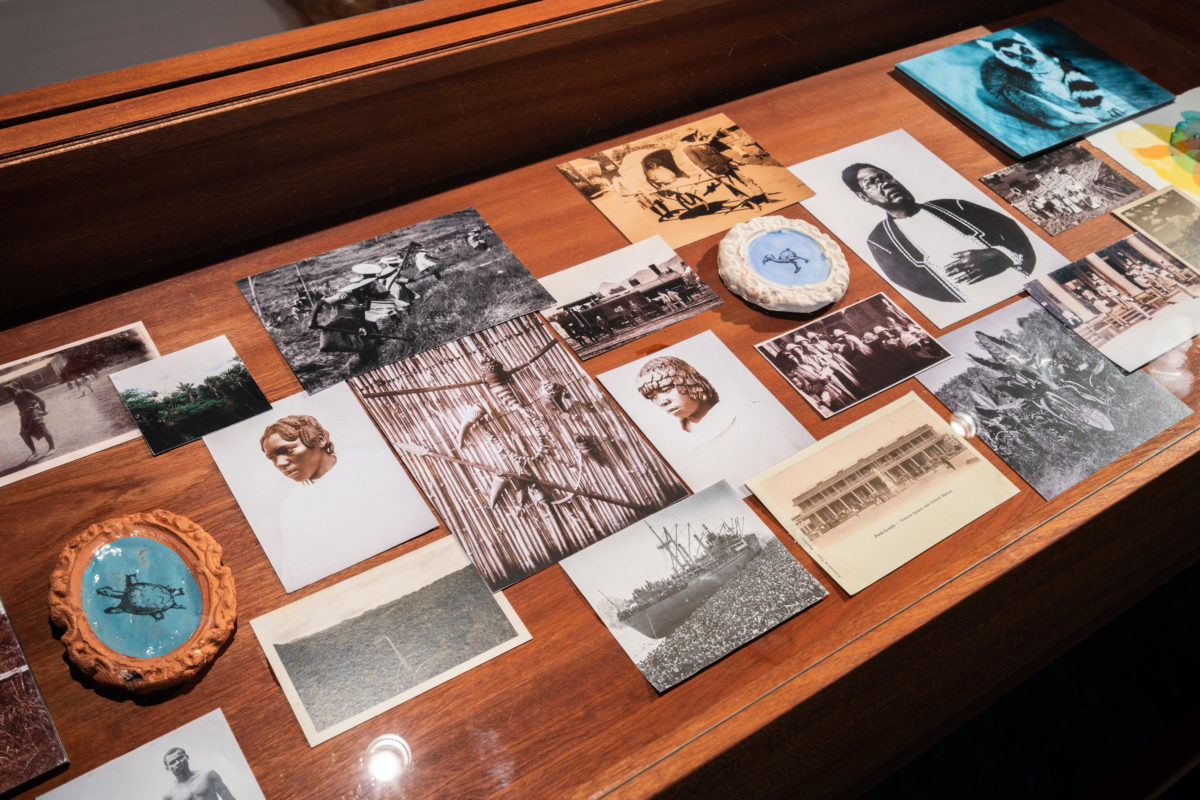
Photography+ is supported by MPB.

